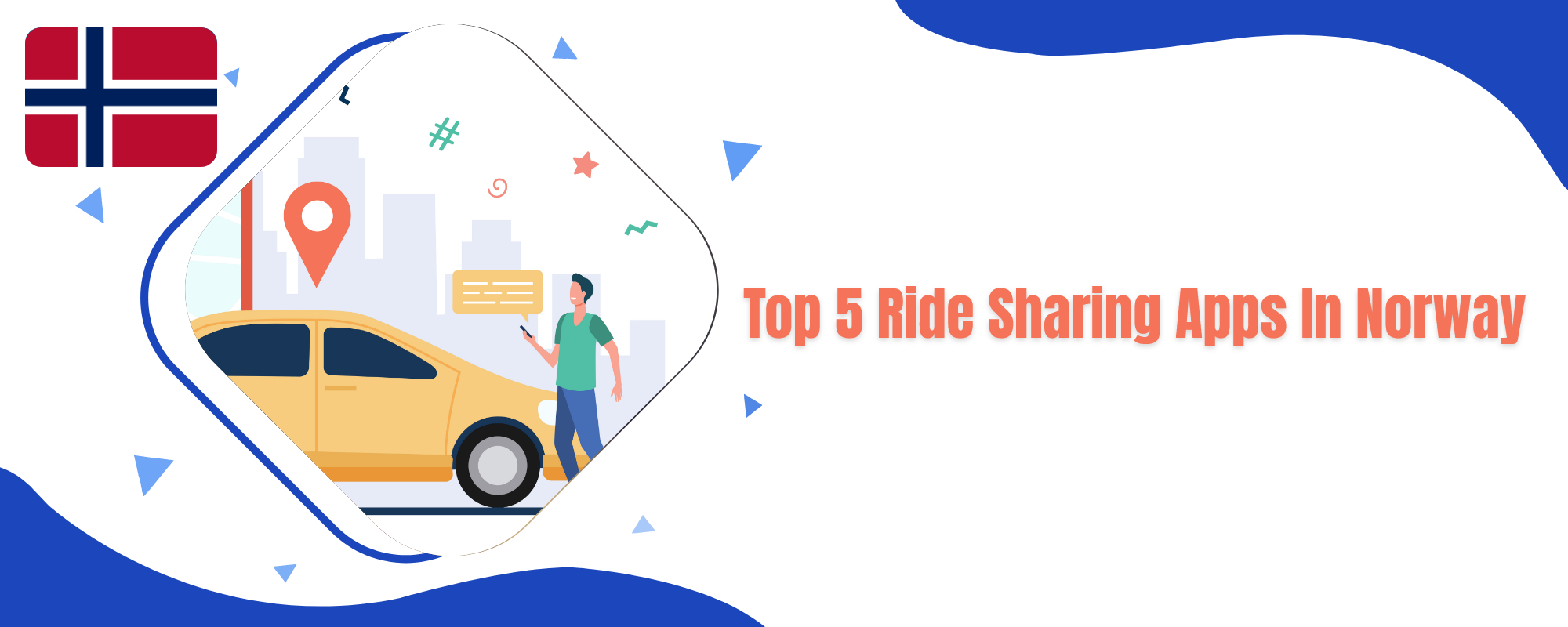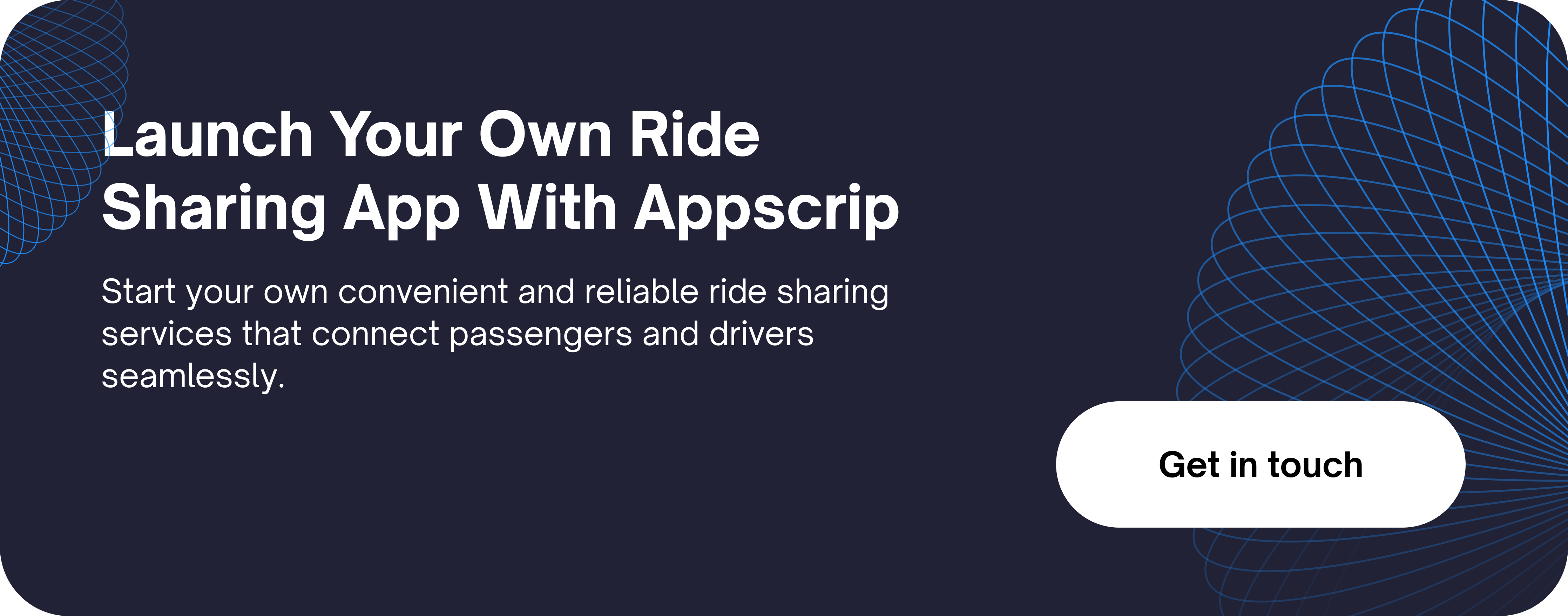There has been a rise in the use of ride sharing apps in Norway, where locals are more interested in convenience over car ownership. A car was only on their radar because of how much easier and more pleasant it would make their travels if they had one.
The increasing adoption of automobiles has resulted in numerous issues that have an impact on both the natural world and human health. So, it seemed inevitable that ridesharing services like Uber, Lyft, and BlaBla vehicles would be adopted by the transportation industry.
The convenience of calling a taxi at any hour of the day and from any address is a universal benefit brought about by these various apps. The idea of creating a ride-hailing app similar to Uber is growing more enticing as technology advances. But the question remains, how relevant is the ride sharing apps in Norway business model in the current crowded startup landscape?

The increasing need for affordable and efficient transportation options is the driving force behind the worldwide explosion in the use of ride sharing services.
The rising expenses of owning a car, along with government laws and the growing urgency to curb traffic and CO2 emissions for reducing climate change, have contributed to the rise in ride-sharing in recent years. The global market for ride-sharing services is expected to reach $185 million by 2026, according to estimates.
Best Ride Sharing Apps in Norway
Ride-sharing apps like Uber and Lyft have exploded in popularity, transforming urban transportation landscapes. But what drives their success, and how do they impact city infrastructure?
Reasons for success:
- Convenience: On-demand access to rides, often at competitive prices.
- Efficiency: Dynamic matching with nearby drivers reduces wait times and optimizes traffic flow.
- Technology: User-friendly apps, cashless payments, and real-time tracking enhance experience.
- Accessibility: Filling gaps in underserved areas with public transport limitations.
- Flexibility: Offering diverse vehicle options cater to various needs and budgets.
SammeVei
Sharing a ride with another person is not only an economical but also an effective and environmentally responsible way to go around the city. SammeVei, which literally translates to “same way” in Norwegian, not only makes it safe but also makes it exciting. Join a group of people who share your interests and pay a little fee (about equivalent to the price of a bus ticket) to the driver who has been selected to share a SammeVei with you through the app.
It was founded in 2016 by Rasmus Myklebust in Oslo, Norway and since then it had received around 4.4million NOK as an investment.
MiVai
Taxis in Norway are a reliable and secure mode of transportation throughout the country, but they can be quite pricey at times. One of the drawbacks is that the rates are not controlled, which means that the tariffs per mile vary depending on the city and the taxi business.
Mivai is a helpful app that allows users to acquire quotations from nearby taxi services and book the taxi service that offers the lowest rate immediately. It also urges you to leave feedback about the driver after the ride to assist other app users in making well-informed decisions in the future. It was founded in 2015 by Ole Gulbrandsen and Jens Balchen in Oslo.
OsloBySykkel
The city of Oslo is a terrific place to ride a bike, and the local government makes it quite simple to do so. Users of the Oslo City Bike app are able to locate and activate bicycles located throughout the city of Oslo. A one-day pass may be purchased for 49 Norwegian Kroner (€5.26; $6.21), a three-day pass can be purchased for 99 Norwegian Kroner (€10.63; $12.54), and an entire season pass (from April to November) can be purchased for 299 Norwegian Kroner (€32.09; $37.86).
Related: 7 Norway Tech Startups That Inspire Change & Innovation
It is an initiative by the local authorities of Oslo to promote cycling and exploration of the city by affordable methods. A wide network of rental and drop-off locations is available to customers. The Bysykkel app, which is required in order to hire a bike, can provide you with up-to-the-minute information regarding availability.
Ruter
A firm known as Ruter is responsible for the operation of the public transportation system in the Oslo region. The app that they have, which is called RuterBillet and is also available in English, is the quickest and most convenient method to buy tickets for public transportation.
Within the app, you will have the option to purchase single tickets as well as period tickets for periods of 24, 7, or 30 days for yourself and your traveling companions.
Within the selected zone, the Ruter tickets can be used on local buses (red ones within Oslo, green ones beyond the city borders), trams, the subway, some fast ferries (those operated by Ruter are prominently marked), and trains.
Uber
Uber provides insanely low cab fare booking to app users of ride sharing apps in Norway after registration. The price of the taxi ride is determined by a number of variables, including the distance traveled, the amount of time spent in transit and waiting, as well as the kind of vehicle used.
For the convenience of the customers, the platform provides access to a variety of different kinds of cars. These services are as follows: UberGo, Go Sedan, UberGo Rentals, Sedan Rentals, XL Rentals, Uber XL, Uber Auto, and Bike share. The fare can be paid for with a variety of different payment methods, including cash and credit cards.
Impact on infrastructure:
The future of ride-sharing apps hinges on striking a balance between convenience, efficiency, and responsible integration into city infrastructure. By addressing the challenges and working towards sustainable solutions, ride-sharing can be a valuable tool for enhancing urban mobility without creating new problems.
Positives:
- Reduced car ownership: Potentially decreases private car ownership, freeing up parking space and reducing congestion.
- Public transport integration: Some cities collaborate with ride-sharing companies to create seamless multimodal transportation systems.
- Data insights: App data can inform city planning regarding traffic patterns and demand for specific routes.
- Environmental benefits: Shared rides, particularly electric/hybrid vehicles, can lower emissions compared to individual car use.
Negatives:
- Congestion: Increased number of vehicles on the road, especially during peak hours, can exacerbate congestion in some areas.
- Labour concerns: Driver pay and working conditions have been criticised, raising concerns about worker exploitation.
- Accessibility paradox: While offering transportation options, ride-sharing affordability issues can exclude low-income residents.
- Regulatory challenges: Integrating ride-sharing into existing legal frameworks and ensuring fair competition with traditional taxi services requires careful consideration.
Monetisation and Business Model of Ride sharing apps in Norway
The use of aggregator ride sharing business models has also become more common as a direct result of the proliferation of ride sharing apps in Norway. The company does not produce its own ride sharing product, but rather relies on agreements with existing companies to meet customer demand. Standard procedures for corporate governance are also implemented by ride sharing apps in Norway that are based on peer-to-peer technology. In situations like these, app development frameworks such as Karry, a development script for an app that allows users to share rides, can be deployed.
Companies such as Uber and Lyft use algorithms to link individuals who require a ride with drivers who are available to offer one. Since the market decides how much each fare should be, there is no set schedule for when changes will take effect. Ride sharing apps in Norway can provide their customers, car owners, and even the company itself with increased transparency by using services such as ride tracking and driver rating.
Conclusion
In conclusion, individuals who own cars can use the economic model of ride sharing apps in Norway as a means to transition into roles that include providing public services. This is a possibility since the model permits individuals to drive their own vehicles to work in the areas of their choice. Transparency can be improved with features such as ride and driver ratings. There are no licensing procedures, registration fees, or tariffs that must be paid by service providers.
With the assistance of frameworks such as Karry, a ride sharing app development framework, prospective business owners are able to launch their very own ride sharing companies. It’s a turnkey solution that helps your taxi booking company compete with the likes of Uber by providing a user experience that’s as convenient as the latter for today’s passengers.










